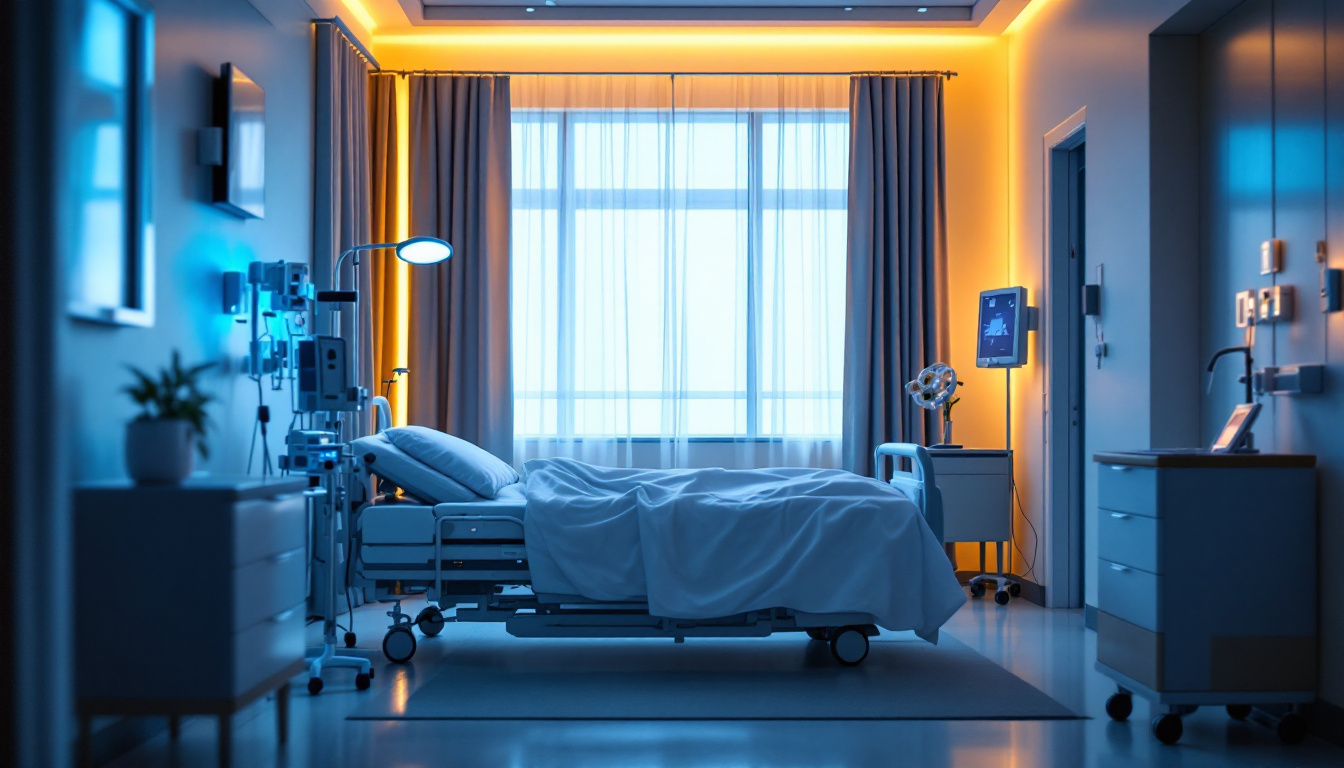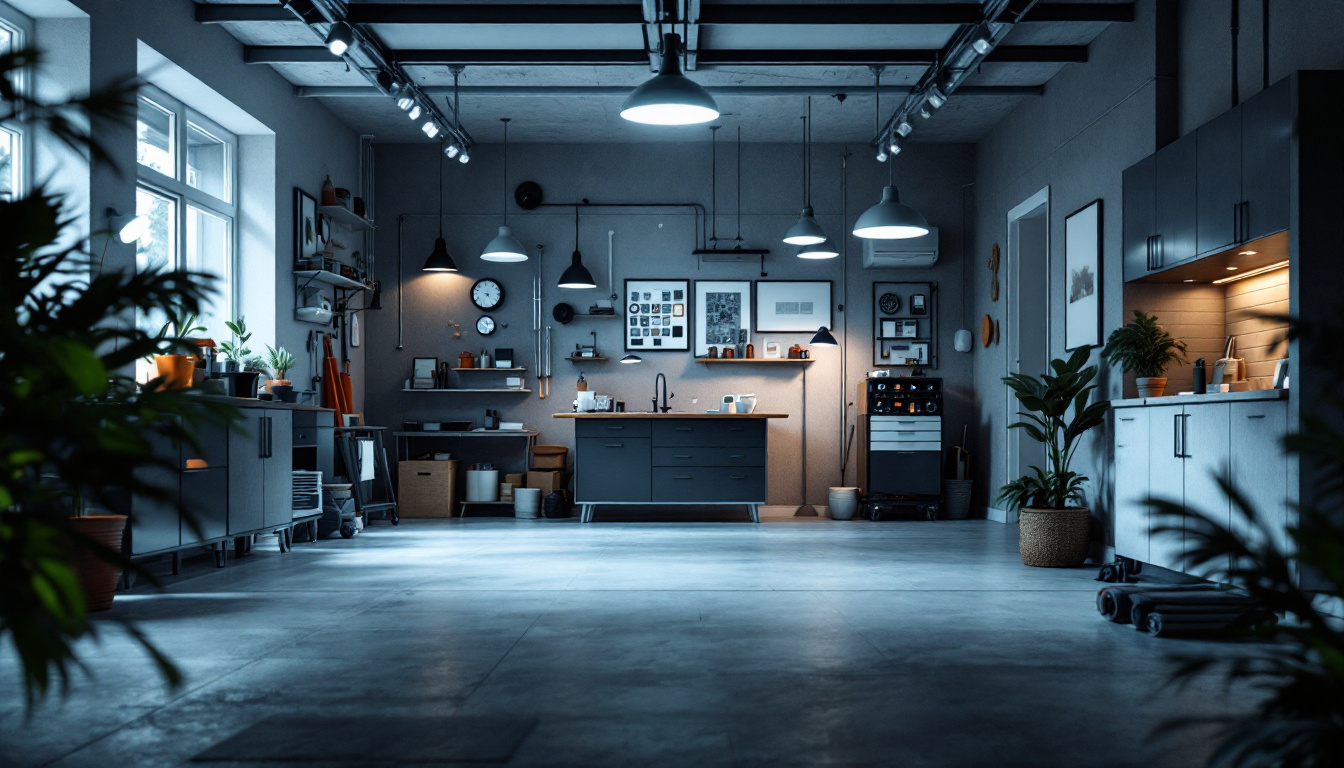

Lighting plays a pivotal role in healthcare environments, influencing everything from patient recovery to staff efficiency. For lighting contractors, understanding the nuances of hospital bed lights is essential. This article explores various aspects of hospital bed lighting, emphasizing the importance of proper installation and design tailored to healthcare needs.
The significance of appropriate lighting in healthcare settings extends far beyond aesthetic appeal. For patients, well-designed lighting can promote healing and comfort. In contrast, inadequate lighting can contribute to anxiety and hinder recovery. Brightness and color temperature significantly impact patients’ mental states and overall well-being. Studies have shown that patients in well-lit environments report lower levels of stress and discomfort, which can lead to shorter hospital stays and improved health outcomes.
Moreover, proper lighting enhances the performance of healthcare professionals. Doctors and nurses require sufficient illumination to effectively carry out examinations, procedures, and medical tasks. Optimal lighting solutions can reduce errors, promote focus, and improve clinical outcomes, creating a supportive environment for both patients and staff alike. The integration of smart lighting systems that adjust automatically based on the time of day or the specific needs of a medical procedure can further enhance efficiency and safety in healthcare settings.
Research indicates that exposure to natural light has profound effects on patients’ recovery times. Hospital bed lights should mimic these conditions, combining natural light qualities with adjustable settings that cater to various scenarios. This adaptability enables patients to feel more at ease, ultimately influencing the pace and quality of their recovery. Furthermore, studies have demonstrated that patients who have access to views of the outdoors or receive ample natural light report higher satisfaction levels with their hospital experience, which can also positively affect their overall health.
Incorporating lighting that can change in intensity and color temperature can create a calming atmosphere. For instance, warm light during nighttime can help in winding down for sleep, while cooler light can enhance alertness during daytime hours. This thoughtful design promotes a holistic approach to wellness within healthcare facilities. Additionally, the use of circadian lighting systems, which adjust in tandem with the natural light cycle, can help regulate patients’ sleep patterns and improve their mood, further supporting their recovery journey.
For healthcare professionals, lighting is not just a support mechanism; it is a critical tool. Proper lighting can reduce eye strain and improve visual acuity, making it easier for healthcare providers to perform their tasks effectively. In areas where surgical procedures are carried out, focused and adjustable lighting is vital for achieving precision. The use of task lighting in conjunction with ambient lighting can create a well-balanced environment that meets the diverse needs of medical staff.
Lighting contractors should consider the various tasks performed in healthcare settings. For example, in intensive care units (ICUs) and emergency departments, lighting should be bright enough to evaluate patient conditions swiftly, yet should also allow for softer settings to minimize disturbances during critical care. Such flexibility is instrumental in creating a functional and efficient work environment for healthcare professionals. Furthermore, training staff on the importance of lighting and how to utilize it effectively can lead to improved job satisfaction and a more harmonious workplace, ultimately benefiting patient care and operational efficiency.
The design of hospital bed lights should reflect the specific requirements of both patients and healthcare professionals. A one-size-fits-all approach is seldom adequate; rather, a tailored solution enhances the function and ambiance of patient rooms. Factors such as the type of fixtures, longevity, maintainability, and energy efficiency should all be carefully evaluated in the design process.
Effective hospital bed lights often incorporate features such as dimming capabilities and adjustable color temperatures. These options enable caregivers to customize settings in real-time, supporting the varying needs of patients throughout their stay. Furthermore, contemporary designs frequently include integrated technology for increased functionality.
In the realm of hospital bed lighting, various fixture types can be utilized. LED fixtures are increasingly popular due to their energy efficiency, longevity, and adaptability. These fixtures produce high-quality light without generating excessive heat, making them suitable for any healthcare environment.
Task-specific lighting solutions, such as swing-arm lamps or multi-directional ceiling fixtures, are also beneficial in hospital settings. They allow for focused illumination directly where it is needed, enhancing the visibility for medical staff during assessments and procedures. Additionally, some modern designs incorporate features like motion sensors that automatically adjust the lighting based on patient activity, ensuring that the light is always at an optimal level for both comfort and functionality.
Lighting contractors must ensure that their designs adhere to applicable codes and standards in the healthcare industry. Organizations like the Illuminating Engineering Society (IES) provide guidelines for optimal lighting designs in health environments, emphasizing not just aesthetics but functionality and safety.
Compliance with standards ensures not just the quality of the lighting, but also the well-being of patients and staff. Factors such as illuminance levels, control systems, and emergency lighting are critical elements that must be incorporated into the design to guarantee safety and effectiveness in the hospital environment. Moreover, attention to the psychological impacts of lighting is crucial; studies have shown that appropriate lighting can reduce patient anxiety and promote healing, making it an essential consideration in the overall design strategy. By prioritizing both compliance and patient comfort, healthcare facilities can create environments that support recovery and enhance the overall patient experience.
As the healthcare industry increasingly embraces sustainable practices, lighting contractors have a unique opportunity to incorporate energy-efficient technologies into their designs. Sustainable lighting not only reduces energy consumption but also contributes positively to the environment. By prioritizing eco-friendly materials and innovative designs, healthcare facilities can significantly lower their carbon footprint while promoting a healthier atmosphere for patients and staff alike.
Utilizing LED technology, for example, has the dual benefit of being cost-effective in the long run while providing superior lighting quality. These energy-efficient options are less reliant on traditional power sources, leading to cost savings for healthcare facilities over time. Furthermore, LEDs have a longer lifespan compared to conventional bulbs, which means reduced waste and less frequent replacements, aligning with the sustainability goals of many healthcare organizations.
Integrating smart lighting systems within hospital bed lights represents a forward-thinking approach to healthcare illuminations. Automation and sensor technology can enhance lighting efficiency further by adjusting illumination based on occupancy and natural light availability. Smart systems not only improve energy usage but can also aid in the comfort and well-being of patients. For instance, circadian lighting systems can mimic natural daylight patterns, helping to regulate patients’ sleep cycles and improve recovery times.
Moreover, advanced control systems can enable healthcare professionals to personalize lighting settings based on individual patient requirements, effectively creating an environment that adapts to the needs of those using it. This personalization can be particularly beneficial in specialized units such as pediatrics or geriatrics, where different age groups may have varying sensitivities to light. By allowing caregivers to tailor lighting conditions, hospitals can enhance the overall patient experience, promoting healing and comfort.
To successfully implement hospital bed lighting designs, training and ongoing support for installation and maintenance are crucial. Lighting contractors play a vital role in ensuring that healthcare staff understands the functionality of the systems in place. Workshops and informational sessions can be beneficial for both contractors and hospital staff. These educational initiatives can cover topics such as energy management, the benefits of sustainable lighting, and troubleshooting common issues that may arise with new technologies.
By fostering collaboration and communication between lighting contractors and healthcare providers, all parties can work together to create a safer, more efficient healthcare environment, where the proper lighting design genuinely enhances patient care and operational effectiveness. Additionally, establishing feedback loops where staff can share their experiences and suggestions can lead to continuous improvement in lighting solutions, ensuring that they remain responsive to the evolving needs of the healthcare sector. This proactive approach not only enhances the functionality of lighting systems but also cultivates a culture of innovation and adaptability within healthcare facilities.
In summary, hospital bed lights are a crucial element in healthcare settings. Understanding their importance and intricacies enables lighting contractors to design efficient, compliant, and supportive solutions that foster patient care and staff effectiveness. By focusing on customization, compliance, sustainability, and education, contractors can contribute significantly to the improvement of healthcare environments, positively influencing the experience of both patients and healthcare professionals alike.
Ready to enhance your healthcare lighting solutions? At LumenWholesale, we provide lighting contractors with the highest quality, spec-grade hospital bed lights at unbeatable wholesale prices. Our commitment to cutting out the middleman means you get the best value for your investment. With our extensive selection that meets rigorous industry standards, you can ensure that your lighting projects support patient care and staff effectiveness without compromising on quality or cost. Take advantage of our hassle-free bulk buying and free shipping to elevate your lighting installations. Discover wholesale lighting at the best value and make LumenWholesale your partner in creating optimal healthcare environments.

Discover how contemporary industrial lighting solutions can enhance efficiency and boost profits for lighting contractors.

Discover how a Garage Lighting Layout Calculator can revolutionize your lighting projects.

Discover essential insights for lighting contractors in our comprehensive guide on light poles.

Discover why purchasing work lights in bulk from local distributors might not be the best choice.
Get notified when NEW deals are released.
Optimize your budget with wholesale discounts.
Only top-quality, specification-grade lighting products.
No additional costs at checkout - what you see is what you pay.
We understand the unique needs of contractors.